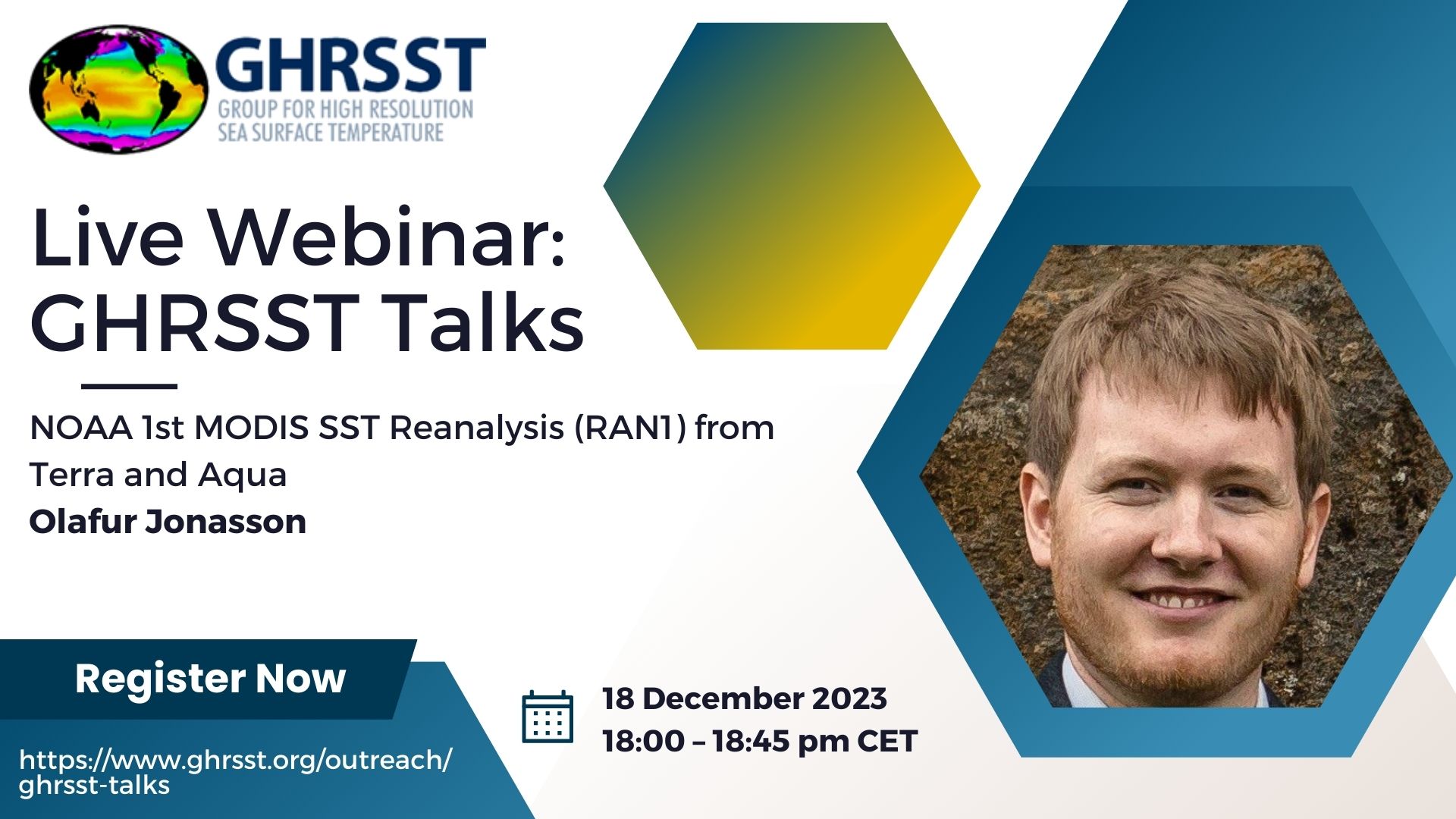Monday, 18 December 2023
Time: From 18:00 – 18:45 (CET)
(check your timezone https://www.worldtimebuddy.com)
NOAA 1ST MODIS SST Reanalysis (RAN1) from Terra and Aqua
Authors: Olafur Jonasson (1), Alexander Ignatov (2), Boris Petrenko (3), Yury Kihai (4), Victor Pryamitsyn (5)
(1) STAR, NOAA NCWCP, College Park, MD 20740; Global Science and Technology, Inc., Greenbelt, MD 20770, US, Author email address: olafur.jonasson@noaa.gov
(2) STAR, NOAA NCWCP, College Park, MD 20740, Author email address: alex.ignatov@noaa.gov
(3) STAR, NOAA NCWCP, College Park, MD 20740; Global Science and Technology, Inc., Greenbelt, MD 20770, US, Author email address: boris.petrenko@noaa.gov
(4) STAR, NOAA NCWCP, College Park, MD 20740; Global Science and Technology, Inc., Greenbelt, MD 20770, US, Author email address: yury.kihai@noaa.gov
(5) STAR, NOAA NCWCP, College Park, MD 20740; Global Science and Technology, Inc., Greenbelt, MD 20770, US, Author email address: victor.pryamitsyn@noaa.gov
Abstract
NOAA provides satellite SST datasets from VIIRS, AVHRR FRAC/GAC and MODIS sensors onboard LEO and ABI, AHI and FCI sensors onboard GEO satellites, using its Advanced Clear-Sky Processor for Ocean (ACSPO) enterprise SST system. To extend, supplement and check for consistency with the previously developed long-term hi-resolution (~1km) SST records, JPSS VIIRS RAN3 and Metop-FG AVHRR FRAC RAN1, and facilitate their feed into the NOAA’s global 0.02° gridded super-collated SST, L3S-LEO, full-mission reprocessing of two MODISs onboard Terra (launched Dec 18, 1999) and Aqua (launched May 4, 2002) was performed with the NOAA ACSPO v2.80 resulting in the 1st MODIS Reanalysis (MODIS RAN1) dataset.
During initial steps of the MODIS RAN1, systematic SST drifts wrt in-situ SSTs of ~0.05K (Aqua) and ~0.10K (Terra) were identified, over the course of the full missions, corresponding to gradual degradation of MODISs’ brightness temperatures (BTs). Moreover, a step change occurred in Terra BTs/SSTs, due to its MODIS nominal blackbody temperature change in 2020. Special efforts were taken to stabilize the BTs in all SST bands (using comparisons with radiative transfer simulated BTs), before feeding them into ACSPO, which stabilized the derived SSTs. We also mitigated periodic systematic anomalies in Terra BTs concurrent with variations in its MODIS blackbody temperature, during quarterly warm-up/cool-down exercises. We present validation of the ACSPO MODIS RAN1 dataset against iQuam drifting buoys, tropical moorings, and Argo floats, using functionalities developed for another NOAA SST system, SQUAM.

